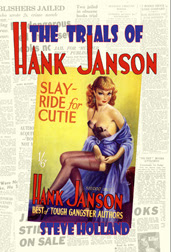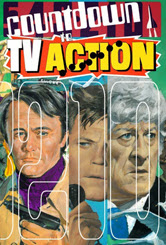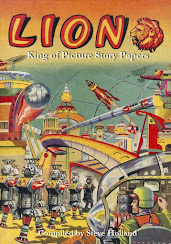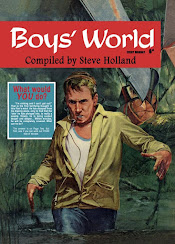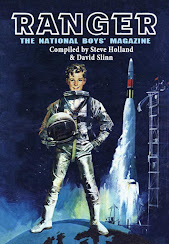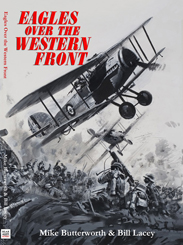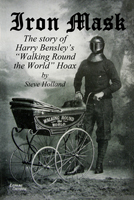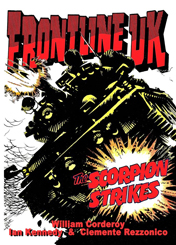Paul Temple takes a break for the next two days but will return on Friday.
Tuesday, April 29, 2014
Monday, April 28, 2014
Sunday, April 27, 2014
Saturday, April 26, 2014
Friday, April 25, 2014
Comic Cuts - 25 April 2014
BBC2 have been celebrating their 50th birthday over the past week or two, which raises the spectre of its disastrous first night . . . but what was that first night's connection with British comics? Have a think about it and I'll answer the question below.
It has been a long time coming, so I'm pleased to say that I'm seeing the glimmerings of the light at the end of the tunnel with the Countdown to TV Action index. The introduction stands at around 35,000 words and most of the linking material between notes is written. Trying to compile the history of an old comic is a little like putting a jigsaw together—made all the trickier because you often don't know what the picture will look like when it is complete. To build up the picture often involves writing up chunks of text where information is available whilst researching the bits that aren't known and then slotting that information into the gaps as it becomes available.
I'm very close to having all those little gaps closed and as far as I can tell the whole structure is still holding together. I've managed to weave lots of different threads through the introduction, so that you don't get a huge block of everything about one strip and then a huge block of everything about another strip and then another huge block... the strips are split into smaller, more bite-sized chunks which we return to over the length of the intro. Actually, one strip does get that one-block treatment, namely 'Countdown', which had one storyline across its 69 episodes.
Meanwhile, let's slip back fifty years to the opening night of BBC2. The channel had been promoted heavily by the BBC so that anticipation for the launch of the new channel was high. It was due to go on air at 7:20 on 20 April 1964, screening a preview and a news bulletin before beginning a scheduled evening of viewing that began with comedy from The Alberts' Channel Too, a performance of Kiss Me, Kate starring Howard Keel and Patricia Morison, and comedy from Arkady Raikin, a Russian comedian. The evening was to culminate with a fireworks show from Southend Pier.
Unfortunately, a 6:30 that evening, a fire broke out at Battersea Power Station and, at the same time, a fault developed in a power cable bringing electricity south from the Midlands. The result was that BBC Television Centre lost all power. This was a particular disaster for the BBC's marketing department. They had been marketing the new station using cartoons of a kangaroo, a baby kangaroo (representing the new station) emerging from the older kangaroo's pouch. To capitalise on this clever bit of branding, a kangaroo had been brought to Television Centre. When the power went down, the kangaroo, stuck in a lift, went berserk.
Presenter Gerald Priestland was in the BBC's original news studio at Alexandra Palace, which still had power but even he wasn't immune to the disaster that was BBC2's opening night. A sound fault meant that the first two minutes of his news bulletin could not be heard by viewers. To add insult to injury, the sound returned just as Priestland was relating a story about a female bus conductor who had been sacked for insulting Pakistani passengers—Priestland repeating the actual phrase used.
But what was the connection with British comics?
Well, that first show, The Alberts' Channel Too, starred two brothers who had been in a hugely popular West End review, An Evening Of British Rubbish. Tony and Dougie Gray were comedians best described as scruffy, eccentric and amateurish, relying on loud, random explosions, shouting and blasts of music to cover up a habit of messing up routines. Their bizarre act left audiences in equal parts bemused and bewildered. They straddled the gap between The Goons and Monty Python, starred in Spike Milligan's A Show Called Fred and Peter Cook's The Establishment and eventually managed to make their BBC2 debut the following day (. . . although the honour of the first full-length broadcast now went to Playschool).
The Alberts' debut on BBC2 was co-written by Denis Gifford. Denis was a screenwriter as well as comics' artist and historian. He wrote scripts for a number of TV shows, as well as creating the format for Sounds Familiar and Looks Familiar. Give yourself a pat on the back if you got the answer right.
Incidentally, Tony Gray died only recently—on 14 April at the age of 86. A very good tribute to him can be found here.
Random scans for today. First up is a cover from an old Bear Alley favourite, John L. Baker, although we haven't had anything from him for ages. Then we have a couple of books from Modern Fiction and Ben Sarto to add to the half a dozen I've posted recently. The cover artist for both is Ray Theobald and the first is amongst my favourites of his. He was never a fantastic figure artist but this one is at least colourful.
Finally, a hardback, which is something odd from me, but this is Mitch Benn's novel Terra, picked up by Mel when we went to see Mitch's recent tour. He has a second novel due out this year—with Terra coming out in paperback at the same time—and a third that he described as "in note form".
Next week: More Paul Temple. Somewhere along the line I have to squeeze in this month's upcoming releases listing.
It has been a long time coming, so I'm pleased to say that I'm seeing the glimmerings of the light at the end of the tunnel with the Countdown to TV Action index. The introduction stands at around 35,000 words and most of the linking material between notes is written. Trying to compile the history of an old comic is a little like putting a jigsaw together—made all the trickier because you often don't know what the picture will look like when it is complete. To build up the picture often involves writing up chunks of text where information is available whilst researching the bits that aren't known and then slotting that information into the gaps as it becomes available.
I'm very close to having all those little gaps closed and as far as I can tell the whole structure is still holding together. I've managed to weave lots of different threads through the introduction, so that you don't get a huge block of everything about one strip and then a huge block of everything about another strip and then another huge block... the strips are split into smaller, more bite-sized chunks which we return to over the length of the intro. Actually, one strip does get that one-block treatment, namely 'Countdown', which had one storyline across its 69 episodes.
Meanwhile, let's slip back fifty years to the opening night of BBC2. The channel had been promoted heavily by the BBC so that anticipation for the launch of the new channel was high. It was due to go on air at 7:20 on 20 April 1964, screening a preview and a news bulletin before beginning a scheduled evening of viewing that began with comedy from The Alberts' Channel Too, a performance of Kiss Me, Kate starring Howard Keel and Patricia Morison, and comedy from Arkady Raikin, a Russian comedian. The evening was to culminate with a fireworks show from Southend Pier.
Unfortunately, a 6:30 that evening, a fire broke out at Battersea Power Station and, at the same time, a fault developed in a power cable bringing electricity south from the Midlands. The result was that BBC Television Centre lost all power. This was a particular disaster for the BBC's marketing department. They had been marketing the new station using cartoons of a kangaroo, a baby kangaroo (representing the new station) emerging from the older kangaroo's pouch. To capitalise on this clever bit of branding, a kangaroo had been brought to Television Centre. When the power went down, the kangaroo, stuck in a lift, went berserk.
Presenter Gerald Priestland was in the BBC's original news studio at Alexandra Palace, which still had power but even he wasn't immune to the disaster that was BBC2's opening night. A sound fault meant that the first two minutes of his news bulletin could not be heard by viewers. To add insult to injury, the sound returned just as Priestland was relating a story about a female bus conductor who had been sacked for insulting Pakistani passengers—Priestland repeating the actual phrase used.
But what was the connection with British comics?
Well, that first show, The Alberts' Channel Too, starred two brothers who had been in a hugely popular West End review, An Evening Of British Rubbish. Tony and Dougie Gray were comedians best described as scruffy, eccentric and amateurish, relying on loud, random explosions, shouting and blasts of music to cover up a habit of messing up routines. Their bizarre act left audiences in equal parts bemused and bewildered. They straddled the gap between The Goons and Monty Python, starred in Spike Milligan's A Show Called Fred and Peter Cook's The Establishment and eventually managed to make their BBC2 debut the following day (. . . although the honour of the first full-length broadcast now went to Playschool).
The Alberts' debut on BBC2 was co-written by Denis Gifford. Denis was a screenwriter as well as comics' artist and historian. He wrote scripts for a number of TV shows, as well as creating the format for Sounds Familiar and Looks Familiar. Give yourself a pat on the back if you got the answer right.
Incidentally, Tony Gray died only recently—on 14 April at the age of 86. A very good tribute to him can be found here.
Random scans for today. First up is a cover from an old Bear Alley favourite, John L. Baker, although we haven't had anything from him for ages. Then we have a couple of books from Modern Fiction and Ben Sarto to add to the half a dozen I've posted recently. The cover artist for both is Ray Theobald and the first is amongst my favourites of his. He was never a fantastic figure artist but this one is at least colourful.
Finally, a hardback, which is something odd from me, but this is Mitch Benn's novel Terra, picked up by Mel when we went to see Mitch's recent tour. He has a second novel due out this year—with Terra coming out in paperback at the same time—and a third that he described as "in note form".
Next week: More Paul Temple. Somewhere along the line I have to squeeze in this month's upcoming releases listing.
Thursday, April 24, 2014
Commando issues 4699-4702
Commando issues on sale 24th April 2014.
Commando No 4699 – Ground Attack!
The Hurricanes of the Desert Air Force were rightly feared by the men of the Afrika Korps. Screaming in from the searing blue skies, their guns wrought massive destruction. Pilot Officer Billy Hammond was one of the best of the ground attack boys, lightning fast, deadly accurate.
So they sent him to a new squadron with new kites and new weapons — PP-3s, fearsome three-inch air-to-ground rockets. The only problem was that they had sent him to a squadron where an old enemy waited. One on his own side!
Story: Peter Grehan
Art: Carlos Pino
Cover: Carlos Pino
Commando No 4700 – The Silver Bugle
This is the story of Sam Curtis, light infantry commander, of the silver bugle that went with him to war, and of the fighting tradition that began nearly two centuries before, with the first raid of the light “Bobs” on the enemy-held island of Walcheren, and the day a dreadful curse fell on the Domburg windmill…
Introduction
Reading the title and looking at Alvaro’s thunderous cover, you might be expecting a story about a haunted bugle (or something of the sort). If you are, disappointment awaits. Not that this isn’t a good story, because it is, but because the Bugle very much plays second fiddle (sorry!) to the two principal characters and the gulf that divides them. It’s classic Commando warfare…between men on the same side.
Sostres’ inside art helps the mix along, with a striking mix of highly-detailed images backed with broader sweeps of the brush, his faces and expressions very nicely drawn.
So, follow the bugle’s call and try out what was originally titled Short Step Into Danger.
Calum Laird, Commando Editor
Story: Eric Hebden
Art: Sostres
Cover: Alvaro
Originally Commando No 137 (October 1964), re-issued as No 711 (January 1973)
Commando No 4701 – Dangerous War
Lieutenant Jason Spark and his Commando team had completed another hazardous mission — blowing up an enemy radar station in Occupied France. While beating a hasty retreat, they found an unexpected prize — a high-ranking German officer who could provide the Top Brass with valuable secrets and intelligence.
All Jason’s team had to do was bring their captive in alive. Little did they know that even if they did that, an even more dangerous assignment would await them…
Story: George Low
Art: Olivera
Cover: Janek Matysiak
Commando No 4702 – Operation “Viking”
Norway, a proud country, lay under Nazi rule. Slowly signs of resistance began to show, the beginning of a bitter war against the invaders.
And although the defiant days of the marauding Vikings of old were long past, it was said that in one remote fiord the battle was being waged to the limit by the ghost of a Viking berserker many centuries dead…
Introduction
Norway, with its icy Scandinavian landscapes and rich, Viking heritage, is an ideal setting for a Commando adventure. Set against the German occupation, here we have a brilliant yarn with a supernatural edge and a Berserker legend at the heart of it.
Featuring some exciting interior art by Denis McLoughlin and Ron Brown’s atmospheric underwater cover, we hope you agree that this is great fun. You’d go berserk if you missed out!
Scott Montgomery, Deputy Editor
Story: Alan Hemus
Art: Denis Mcloughlin
Cover: Ron Brown
Originally Commando No 2313 (September 1989), re-issued as No 3875 (January 2006)
Commando No 4699 – Ground Attack!
The Hurricanes of the Desert Air Force were rightly feared by the men of the Afrika Korps. Screaming in from the searing blue skies, their guns wrought massive destruction. Pilot Officer Billy Hammond was one of the best of the ground attack boys, lightning fast, deadly accurate.
So they sent him to a new squadron with new kites and new weapons — PP-3s, fearsome three-inch air-to-ground rockets. The only problem was that they had sent him to a squadron where an old enemy waited. One on his own side!
Story: Peter Grehan
Art: Carlos Pino
Cover: Carlos Pino
Commando No 4700 – The Silver Bugle
This is the story of Sam Curtis, light infantry commander, of the silver bugle that went with him to war, and of the fighting tradition that began nearly two centuries before, with the first raid of the light “Bobs” on the enemy-held island of Walcheren, and the day a dreadful curse fell on the Domburg windmill…
Introduction
Reading the title and looking at Alvaro’s thunderous cover, you might be expecting a story about a haunted bugle (or something of the sort). If you are, disappointment awaits. Not that this isn’t a good story, because it is, but because the Bugle very much plays second fiddle (sorry!) to the two principal characters and the gulf that divides them. It’s classic Commando warfare…between men on the same side.
Sostres’ inside art helps the mix along, with a striking mix of highly-detailed images backed with broader sweeps of the brush, his faces and expressions very nicely drawn.
So, follow the bugle’s call and try out what was originally titled Short Step Into Danger.
Calum Laird, Commando Editor
Story: Eric Hebden
Art: Sostres
Cover: Alvaro
Originally Commando No 137 (October 1964), re-issued as No 711 (January 1973)
Commando No 4701 – Dangerous War
Lieutenant Jason Spark and his Commando team had completed another hazardous mission — blowing up an enemy radar station in Occupied France. While beating a hasty retreat, they found an unexpected prize — a high-ranking German officer who could provide the Top Brass with valuable secrets and intelligence.
All Jason’s team had to do was bring their captive in alive. Little did they know that even if they did that, an even more dangerous assignment would await them…
Story: George Low
Art: Olivera
Cover: Janek Matysiak
Commando No 4702 – Operation “Viking”
Norway, a proud country, lay under Nazi rule. Slowly signs of resistance began to show, the beginning of a bitter war against the invaders.
And although the defiant days of the marauding Vikings of old were long past, it was said that in one remote fiord the battle was being waged to the limit by the ghost of a Viking berserker many centuries dead…
Introduction
Norway, with its icy Scandinavian landscapes and rich, Viking heritage, is an ideal setting for a Commando adventure. Set against the German occupation, here we have a brilliant yarn with a supernatural edge and a Berserker legend at the heart of it.
Featuring some exciting interior art by Denis McLoughlin and Ron Brown’s atmospheric underwater cover, we hope you agree that this is great fun. You’d go berserk if you missed out!
Scott Montgomery, Deputy Editor
Story: Alan Hemus
Art: Denis Mcloughlin
Cover: Ron Brown
Originally Commando No 2313 (September 1989), re-issued as No 3875 (January 2006)
Wednesday, April 23, 2014
Tuesday, April 22, 2014
Monday, April 21, 2014
Sunday, April 20, 2014
Saturday, April 19, 2014
Friday, April 18, 2014
Comic Cuts - 18 April 2014
The big unveiling . . . so this is the cover I'm planning for the Countdown to TV Action index. It's a little 'busy' but I wanted examples from a wide variety of the strips as it's their one chance to be seen in colour. I still need to tinker with a couple of areas (logos, the spine and I'll probably put a Bear Alley Books logo on the back) but I'm pleased with the way it turned out.
The first notion I had was to incorporate images into the numbers of a 5-4-3-2-1-0 countdown. Unfortunately, it looked horrible because the page is so tall and the numbers had to be vertically stretched so they're taller and thinner than they should be. I partly resolved that by using the two original logos to create a title logo plus some panels from the 'Countdown' strip for the back cover. I then used bands of different widths and elements from covers—and three from original artwork.
I spent my birthday designing it, so I hope you like it. I could have been watching TV or reading a book instead. It was a deliberately quiet day. Like the Queen, I have an official birthday and a day for public celebration, which will be Saturday—tomorrow if you're reading this the day it's posted.
So I added another year to my age during the week and aside from the expected cracks and creaks from muscles that used to work smoothly, I'm not feeling especially old. Part of that is down to being more active, having spent a good part of the year forcing myself to go for walks and get some exercise. The idea was not to simply lose some weight but to make a lifestyle change so that a morning walk became part of my regularly daily routine. I'm now walking a mile and a half every morning and another three-quarters of a mile in the afternoon; in fact, I now feel guilty if I don't walk.
I managed to lose 12 pounds and a few inches around the waist last year, but it has taken until now to shake off the couple of pounds I put on over Christmas/Winter. OK, that might not sound like much of an achievement, but you have to remember that this time last year I'd piled on a lot of weight after giving up smoking and it was still heading skywards. So in a year I've turned my (steady) weight increase into a (bumpy) weight loss.
My poor exercise bike is slowly falling apart. The strap over the left hand pedal snapped a long time ago, but this week the speedometer and mileometer broke after I'd cycled exactly 1,698 miles. I can still use the bike, but now I have to measure my cycling in time (I usually it in 15 minute bursts) rather than mileage.
I was sorry to learn of Sue Townsend's death as I was a long-time fan of her Adrian Mole books. There haven't been that many comedy books as funny as The Secret Diary of Adrian Mole aged 13 3/4—first published way back in 1982, so I probably read it a year or two later, so thirty years ago. That she was able to maintain the level of comedy throughout the series (and, I should add, in her other novels) is proof of her amazing talent. That she did it through quite a lot of adversary makes it all the more amazing (see her obituaries in the Independent and Guardian for more on her life).
Continuing with a little run of Ted Tubb Dumarest books, we present #19 The Quillian Sector, an Arrow paperback from 1982 with a cover by Fred Gambino. And finally a book I picked up last weekend, a Panther from 1968 with a photographic cover . . . something a bit different.
We'll be continuing to run the latest Paul Temple yarn . . . it's quite a long one, but I'm putting the time I'm saving to good use! Cheers!
The first notion I had was to incorporate images into the numbers of a 5-4-3-2-1-0 countdown. Unfortunately, it looked horrible because the page is so tall and the numbers had to be vertically stretched so they're taller and thinner than they should be. I partly resolved that by using the two original logos to create a title logo plus some panels from the 'Countdown' strip for the back cover. I then used bands of different widths and elements from covers—and three from original artwork.
I spent my birthday designing it, so I hope you like it. I could have been watching TV or reading a book instead. It was a deliberately quiet day. Like the Queen, I have an official birthday and a day for public celebration, which will be Saturday—tomorrow if you're reading this the day it's posted.
So I added another year to my age during the week and aside from the expected cracks and creaks from muscles that used to work smoothly, I'm not feeling especially old. Part of that is down to being more active, having spent a good part of the year forcing myself to go for walks and get some exercise. The idea was not to simply lose some weight but to make a lifestyle change so that a morning walk became part of my regularly daily routine. I'm now walking a mile and a half every morning and another three-quarters of a mile in the afternoon; in fact, I now feel guilty if I don't walk.
I managed to lose 12 pounds and a few inches around the waist last year, but it has taken until now to shake off the couple of pounds I put on over Christmas/Winter. OK, that might not sound like much of an achievement, but you have to remember that this time last year I'd piled on a lot of weight after giving up smoking and it was still heading skywards. So in a year I've turned my (steady) weight increase into a (bumpy) weight loss.
My poor exercise bike is slowly falling apart. The strap over the left hand pedal snapped a long time ago, but this week the speedometer and mileometer broke after I'd cycled exactly 1,698 miles. I can still use the bike, but now I have to measure my cycling in time (I usually it in 15 minute bursts) rather than mileage.
I was sorry to learn of Sue Townsend's death as I was a long-time fan of her Adrian Mole books. There haven't been that many comedy books as funny as The Secret Diary of Adrian Mole aged 13 3/4—first published way back in 1982, so I probably read it a year or two later, so thirty years ago. That she was able to maintain the level of comedy throughout the series (and, I should add, in her other novels) is proof of her amazing talent. That she did it through quite a lot of adversary makes it all the more amazing (see her obituaries in the Independent and Guardian for more on her life).
Continuing with a little run of Ted Tubb Dumarest books, we present #19 The Quillian Sector, an Arrow paperback from 1982 with a cover by Fred Gambino. And finally a book I picked up last weekend, a Panther from 1968 with a photographic cover . . . something a bit different.
We'll be continuing to run the latest Paul Temple yarn . . . it's quite a long one, but I'm putting the time I'm saving to good use! Cheers!
Thursday, April 17, 2014
Wednesday, April 16, 2014
Tuesday, April 15, 2014
Monday, April 14, 2014
Sunday, April 13, 2014
Saturday, April 12, 2014
Friday, April 11, 2014
Comic Cuts - 11 April 2014
The problem with writing a weekly column that is intended to round up some of my personal news is this: I live a life that barely changes from one week to the next. If my life was to be filmed and sped up so you could watch a whole day in a minute, or a week in an hour, I would be a solitary, still figure in the middle of the screen, blurring occasionally as I left my chair before returning a half-second later with a fresh cup of coffee.
I would appear as if by magic. Light would crawl across the wall and crawl away as the sun rolled across the heavens and I would disappear for the night.
Don't get me wrong. I'm not unhappy with this situation. I enjoy piecing together the stories of the old comics I write about, I occasionally get to talk to interesting people and I'm always rooting around after some fact or other, the result of which can vary from disappointing to so fascinating I lose the rest of the day.
So... there isn't much news. Again. What I can tell you is that we're over the 30,000 words line—the latest count was 31,500, with around 21,500 in the correct order. (Just to explain: by this I mean that I have the bulk of the material written up in a fashion I'm happy with plus another 10,000 words of material that I'm still pulling into shape; most of this additional wordage is a precis of each of the storylines of each of the strips which I'm weaving into the introduction; there's also notes to myself about things that I've got to remember to talk about, footnotes, a lengthy precis of the 'Countdown' comic strip that I'm thinking of doing as a section on its own.
There are also notes that probably won't make it into the final draft, such as this paragraph charting the rise of television viewing, which I've decided I didn't need:
The nine-day Apollo/SOYUZ mission in 1975 was broadcast to more than one billion people (a quarter of the world’s population at the time) and the 1978 world cup in Argentina was watched by about a billion people in 42 countries as the host nation beat the Netherlands; a record viewership surpassing the 1976 Olympics. Three billion had access to the Seoul Olympics in 1988, four billion (Sydney Olympics in 2000) and 4.8 billion (London, 2012).
There, that's a cut scene from the book that might be reincorporated if I ever do a Director's Cut.
So let's dive straight into the random scans. I spent Saturday cleaning up a couple of pics for you, including another pair of Fred Gambino's covers for Ted Tubb Dumarest series. The Terra Data was published by Arrow in 1985, five years after it first appeared in the USA, and five years after the UK appearance of Prison of Night, which was last week's random scan. Nectar of Heaven was another from 1985. Fred Gambino has a book out in a couple of month's time: Dark Shepherd: The Art of Fred Gambino, which should be well-worth looking out for.
I haven't read anything by Dan Simmons for years, so I grabbed up Olympos when I saw it in a charity shop. Unfortunately, it's a sequel and I don't have Ilium. But I love the cover. I couldn't read the signature, but I believe it is the work of Gary Ruddell, who was nominated for a Hugo Award for an earlier cover for a Dan Simmons book.
Finally, a return to the kind of artwork that appeared on paperbacks when I was trawling the shops every week for the latest SF titles—although this one is a non-fiction book on weapons. But who's the artist? I wonder if it's Tony Roberts. Anyone?
Next week: we're continuing the latest adventure of Paul Temple. Hope you're enjoying it.
I would appear as if by magic. Light would crawl across the wall and crawl away as the sun rolled across the heavens and I would disappear for the night.
Don't get me wrong. I'm not unhappy with this situation. I enjoy piecing together the stories of the old comics I write about, I occasionally get to talk to interesting people and I'm always rooting around after some fact or other, the result of which can vary from disappointing to so fascinating I lose the rest of the day.
So... there isn't much news. Again. What I can tell you is that we're over the 30,000 words line—the latest count was 31,500, with around 21,500 in the correct order. (Just to explain: by this I mean that I have the bulk of the material written up in a fashion I'm happy with plus another 10,000 words of material that I'm still pulling into shape; most of this additional wordage is a precis of each of the storylines of each of the strips which I'm weaving into the introduction; there's also notes to myself about things that I've got to remember to talk about, footnotes, a lengthy precis of the 'Countdown' comic strip that I'm thinking of doing as a section on its own.
There are also notes that probably won't make it into the final draft, such as this paragraph charting the rise of television viewing, which I've decided I didn't need:
The nine-day Apollo/SOYUZ mission in 1975 was broadcast to more than one billion people (a quarter of the world’s population at the time) and the 1978 world cup in Argentina was watched by about a billion people in 42 countries as the host nation beat the Netherlands; a record viewership surpassing the 1976 Olympics. Three billion had access to the Seoul Olympics in 1988, four billion (Sydney Olympics in 2000) and 4.8 billion (London, 2012).
There, that's a cut scene from the book that might be reincorporated if I ever do a Director's Cut.
So let's dive straight into the random scans. I spent Saturday cleaning up a couple of pics for you, including another pair of Fred Gambino's covers for Ted Tubb Dumarest series. The Terra Data was published by Arrow in 1985, five years after it first appeared in the USA, and five years after the UK appearance of Prison of Night, which was last week's random scan. Nectar of Heaven was another from 1985. Fred Gambino has a book out in a couple of month's time: Dark Shepherd: The Art of Fred Gambino, which should be well-worth looking out for.
I haven't read anything by Dan Simmons for years, so I grabbed up Olympos when I saw it in a charity shop. Unfortunately, it's a sequel and I don't have Ilium. But I love the cover. I couldn't read the signature, but I believe it is the work of Gary Ruddell, who was nominated for a Hugo Award for an earlier cover for a Dan Simmons book.
Finally, a return to the kind of artwork that appeared on paperbacks when I was trawling the shops every week for the latest SF titles—although this one is a non-fiction book on weapons. But who's the artist? I wonder if it's Tony Roberts. Anyone?
Next week: we're continuing the latest adventure of Paul Temple. Hope you're enjoying it.
Thursday, April 10, 2014
Commando issues 4695-4698
Commando issues on sale 10th April 2014.
Commando No 4695 – ANZAC Cove
On the morning of the 28 June 1914 two pistol shots fired in a Sarajevo street would plunge the world into the most destructive war it had ever known as a spider’s web of alliances set Great Power against Great Power.
In the far corners of the British Empire, men flocked to the flag, ready to do their bit in the European war. For the blokes of the Australian and NewZealand Army Corps, though, it wasn't France they ended up in, it was a place called Gallipoli and a particular spot always mentioned when tales of bravery are told... ANZAC COVE
Story: George Low
Art: Keith Page
Cover: Ian Kennedy
Commando No 4696 – Sudden Death!
Mountain men — each one of them — a sergeant, a corporal and a private, all trained for war, but each a highly skilled mountaineer in his own right.
Their difficult and dangerous mission was to find a VIP Brigadier who had been kidnapped by the Germans and hidden high in the Italian mountains before being hustled to Berlin. Within hours the British mountain troops were hot on the trail.
But when men who climb together fall out, when accidents breed suspicion and distrust, every sheer rock face can spell — sudden death!
Introduction
If there’s one thing that the 63-page format and our style of story-telling allows, it’s plenty of twists and turns in our plots. This one is about mountaineers, so why is there a floatplane on the cover?
A cracking cover it is too. Ken Barr’s use of light and shade to lead the eye to the main characters lifts it from good to great. Inside artist Solbes isn’t found wanting either; the faces in here are full of expression, the figures full of energy and movement.
The explanation for the floatplane? Ah well, you’ll have to read this book to find out. And preferably buy it too!
Calum Laird, Commando Editor
Story: Parsons
Art: Solbes
Cover: Ken Barr
Originally Commando No 114 (April 1964), re-issued as No 631 (March 1972)
Commando No 4697 – Desert Heroes
Somewhere in the Horn Of Africa, three Italian tanks bore down on a single British two-pounder gun. behind that gun's shield were three soldiers who had only every fired an anti-tank gun in practice...foe an emergency.
Well, this was that emergency and those men were not going to back down.
No wonder they called these men... DESERT HEROES
Story: George Low
Art: Jaume Forns
Cover: Janek Matysiak
Commando No 4698 – Rescue Mission
Nigel Goodman of the Commandos had a big problem on his hands. In fact he had several problems. They were: three Allied generals, one German general, one Russian paratroop major, one major in the US Rangers. Quite a party! And he had to get them all safely to British lines in Italy.
Oh, yes, there was one other thing — he had a large chunk of the German army chasing him as well!
Introduction
One of Commando’s great strengths is the diversity of its story-telling — although, of course, we’re mainly known for tough, sometimes gritty, war tales. On occasion, however, it can be a welcome change of direction when an author – here veteran scribe Alan Hebden — presents a breathless caper story such as this. The pace just never lets up, rather like a speeding train — which, as you’ll soon see, is entirely appropriate. Featuring wonderful art from Gordon Livingstone and a superb cover from Ian Kennedy, this is one to savour.
Scott Montgomery, Deputy Editor
Story: Alan Hebden
Art: Gordon Livingstone
Cover: Ian Kennedy
Originally Commando No 970 (September 1975), re-issued as No 2300 (August 1989)
Commando No 4695 – ANZAC Cove
On the morning of the 28 June 1914 two pistol shots fired in a Sarajevo street would plunge the world into the most destructive war it had ever known as a spider’s web of alliances set Great Power against Great Power.
In the far corners of the British Empire, men flocked to the flag, ready to do their bit in the European war. For the blokes of the Australian and NewZealand Army Corps, though, it wasn't France they ended up in, it was a place called Gallipoli and a particular spot always mentioned when tales of bravery are told... ANZAC COVE
Story: George Low
Art: Keith Page
Cover: Ian Kennedy
Commando No 4696 – Sudden Death!
Mountain men — each one of them — a sergeant, a corporal and a private, all trained for war, but each a highly skilled mountaineer in his own right.
Their difficult and dangerous mission was to find a VIP Brigadier who had been kidnapped by the Germans and hidden high in the Italian mountains before being hustled to Berlin. Within hours the British mountain troops were hot on the trail.
But when men who climb together fall out, when accidents breed suspicion and distrust, every sheer rock face can spell — sudden death!
Introduction
If there’s one thing that the 63-page format and our style of story-telling allows, it’s plenty of twists and turns in our plots. This one is about mountaineers, so why is there a floatplane on the cover?
A cracking cover it is too. Ken Barr’s use of light and shade to lead the eye to the main characters lifts it from good to great. Inside artist Solbes isn’t found wanting either; the faces in here are full of expression, the figures full of energy and movement.
The explanation for the floatplane? Ah well, you’ll have to read this book to find out. And preferably buy it too!
Calum Laird, Commando Editor
Story: Parsons
Art: Solbes
Cover: Ken Barr
Originally Commando No 114 (April 1964), re-issued as No 631 (March 1972)
Commando No 4697 – Desert Heroes
Somewhere in the Horn Of Africa, three Italian tanks bore down on a single British two-pounder gun. behind that gun's shield were three soldiers who had only every fired an anti-tank gun in practice...foe an emergency.
Well, this was that emergency and those men were not going to back down.
No wonder they called these men... DESERT HEROES
Story: George Low
Art: Jaume Forns
Cover: Janek Matysiak
Commando No 4698 – Rescue Mission
Nigel Goodman of the Commandos had a big problem on his hands. In fact he had several problems. They were: three Allied generals, one German general, one Russian paratroop major, one major in the US Rangers. Quite a party! And he had to get them all safely to British lines in Italy.
Oh, yes, there was one other thing — he had a large chunk of the German army chasing him as well!
Introduction
One of Commando’s great strengths is the diversity of its story-telling — although, of course, we’re mainly known for tough, sometimes gritty, war tales. On occasion, however, it can be a welcome change of direction when an author – here veteran scribe Alan Hebden — presents a breathless caper story such as this. The pace just never lets up, rather like a speeding train — which, as you’ll soon see, is entirely appropriate. Featuring wonderful art from Gordon Livingstone and a superb cover from Ian Kennedy, this is one to savour.
Scott Montgomery, Deputy Editor
Story: Alan Hebden
Art: Gordon Livingstone
Cover: Ian Kennedy
Originally Commando No 970 (September 1975), re-issued as No 2300 (August 1989)
Wednesday, April 09, 2014
Tuesday, April 08, 2014
Monday, April 07, 2014
Subscribe to:
Posts (Atom)

































































